Taiwan is one of the great gems on the Asia travel scene.
No longer the off-the-beaten-track secret it once was, this small East Asian island nation now attracts over 10 million tourists per year.
Because Taiwan looks small on the map, people often book short stays, only to realize they don’t have nearly enough time to even get a taste of everything the country has to offer.
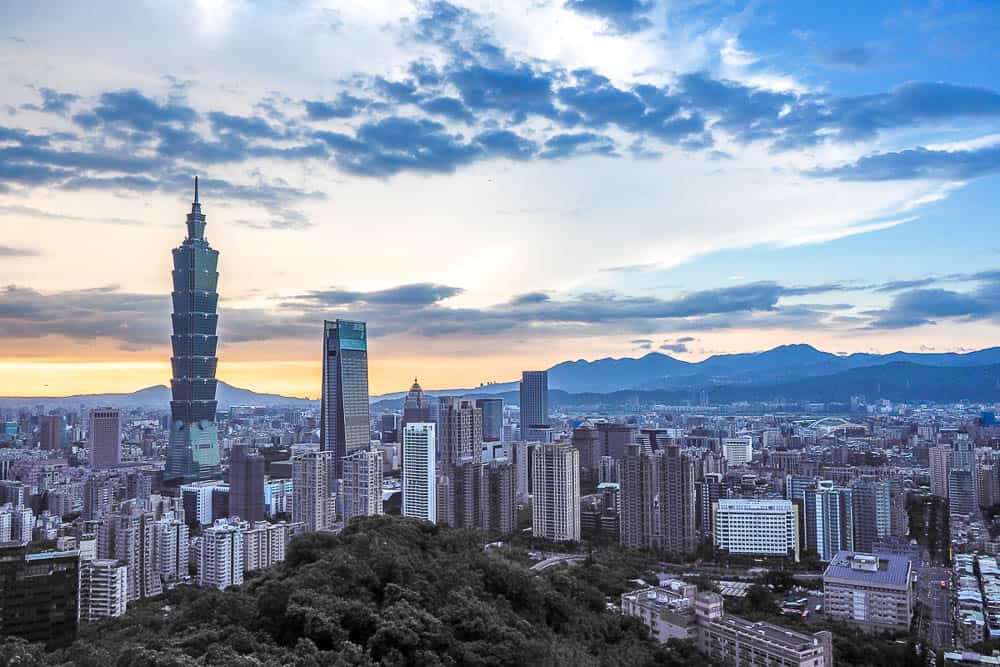
Overview of Taipei the capital of Taiwan with Taipei 101, at 508m the world´s 10th tallest building.
From legendary street food & super hospitable locals to quirky attractions and outdoor splendours, the country really has something for everyone.
In this article, I’m going to give you 10 Taiwan travel tips that will make planning any trip to Taiwan a breeze.
Things You Should Know Before Traveling To Taiwan.
1. When to Visit Taiwan
Deciding when to visit Taiwan is an important factor that will affect what you do on your trip.
Generally speaking, Taiwan does not have a high or low tourist season. The visitor numbers go up and down by month, and each season comes with unique benefits and challenges.
Winter (December to March) brings grey skies and chilly weather to Taipei and the north, while the south of Taiwan remains pleasantly warm.
However, winter is the best time for hot springs and flower viewing, including cherry blossoms.
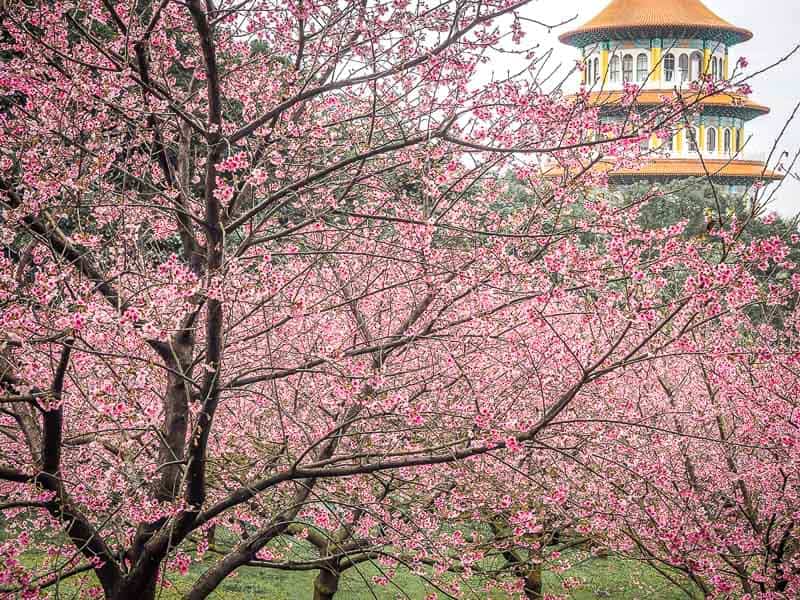
Cherry blossoms in Taiwan
Spring has increasingly warm temperatures, but watch out for the mini rain season in late May to early June.
Summer is extremely hot and humid in Taiwan. On top of that, 3-6 major typhoons usually strike Taiwan from July to October, and this can disrupt travel plans for a day or two.
Still, some people love the summer heat, there are some good festivals, and it’s the best time for the beach.
Finally, autumn is probably the top contender for the best season to visit Taiwan, with little rain, blue skies, lower tourist numbers and pleasant temperatures.
2. Getting Around
When you first arrive at the Taoyuan International Airport, you can reach Taipei by taxi (TWD 1000, 45 min-1 hour), bus (TWD 135, 1 hour), or MRT (TWD 160, 35-50 min).
If you take the MRT, you’ll arrive at Taipei Main Station, from where you can connect to other MRT lines, walk, or take a taxi to reach your hotel.
Before taking the MRT, make sure to buy an EasyCard, which you will use to swipe onto all city buses, metros, and short (non-reserved) trains rides during your trip.
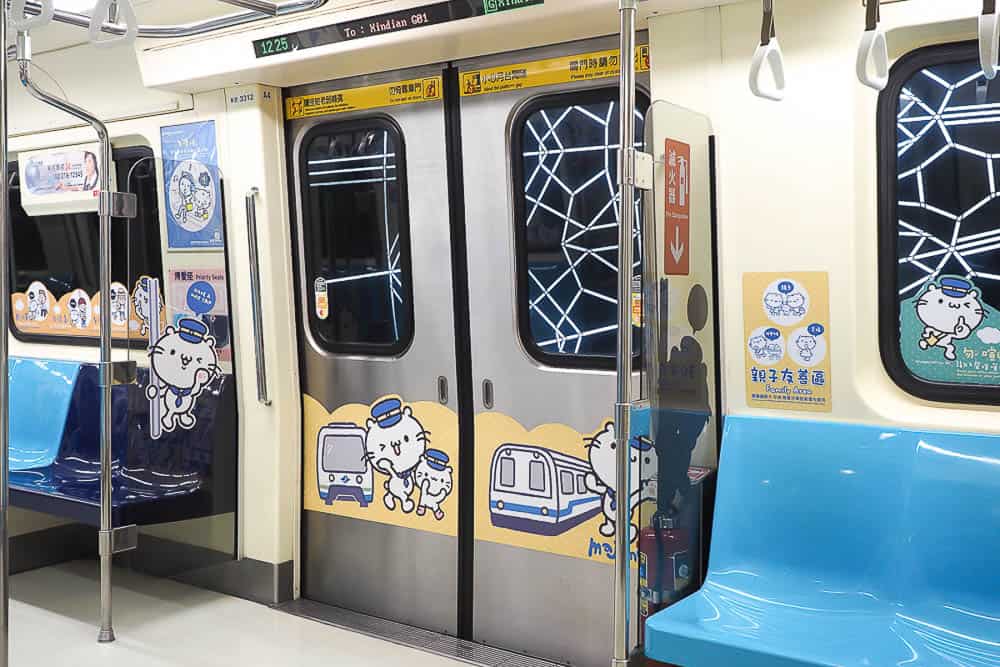
On the Taipei MRT
You can load any amount onto it, and there’s a TWD100 deposit that you can get back at the end of your trip.
All locals in Taipei use an EasyCard because it is convenient and saves money on each trip.
The Taipei MRT is the lifeline and pride of Taipei, and you will use it to go everywhere in the city. If you ever need to take a taxi, they are plentiful and cheap.
For day trips out of Taipei, you may use the MRT (some lines extend well into New Taipei City, the huge city that surrounds Taipei City), local buses, and/or regular (TRA) trains.
For trips further afield around Taipei, you can reserve seats on TRA trains, which do a full circuit around the country, up to two weeks in advance.
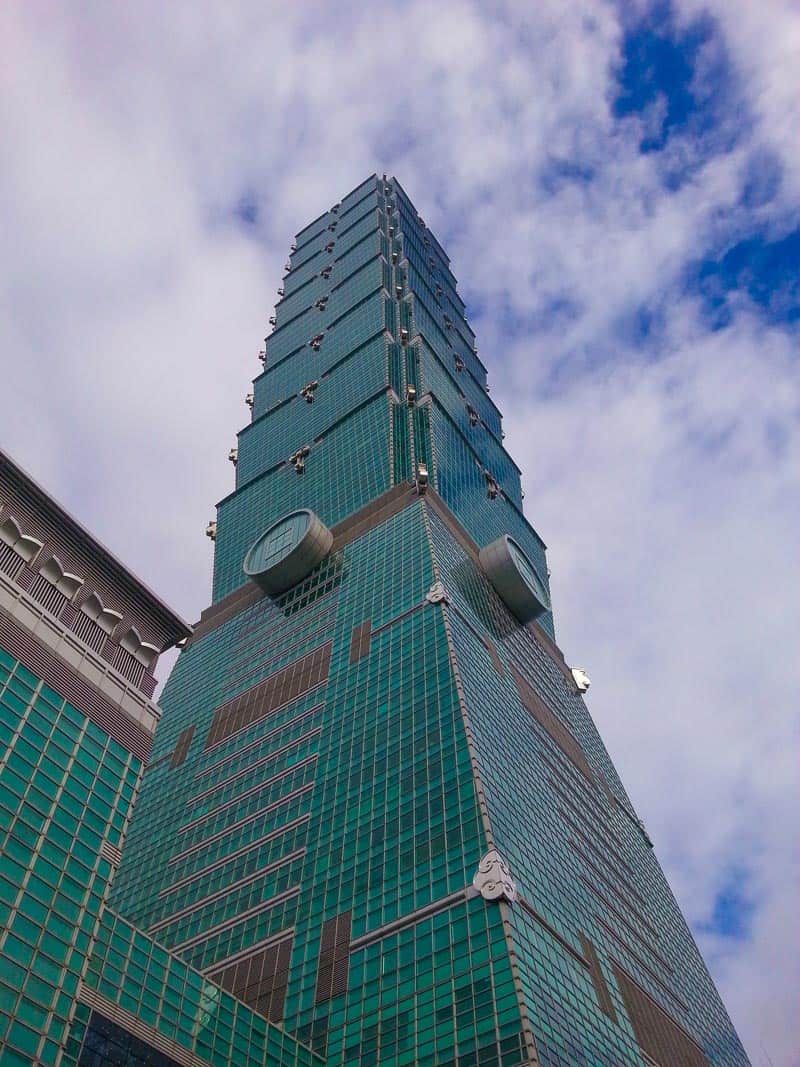
Taipei 101, the tallest building in Taiwan, and a landmark of Taipei
Doing so is recommended, as they frequently sell out, especially on holidays and weekends.
Most trains (except for Express/Puyuma ones) allow you to buy a standing ticket even after all the seats are sold out.
The High-Speed Rail (HSR) also runs down the west coast from Taipei to Zuoying (Kaohsiung). It travels around twice as fast, but also costs about twice as much as the regular train.
There are early-bird discounts, but you can always buy a non-reserved ticket, even at the last minute, and sit in the non-reserved section (cars 10-12).
3. Travel Passes
There are a few tourist travel passes that can save you some money in Taiwan, but they tend to be complicated and only worth it if you use them carefully.
The most popular one is the Taipei Unlimited Fun Pass. This pass comes with 1, 2, or 3-day options. It includes entrance to some major (and some minor) Taipei attractions, including some day trips.
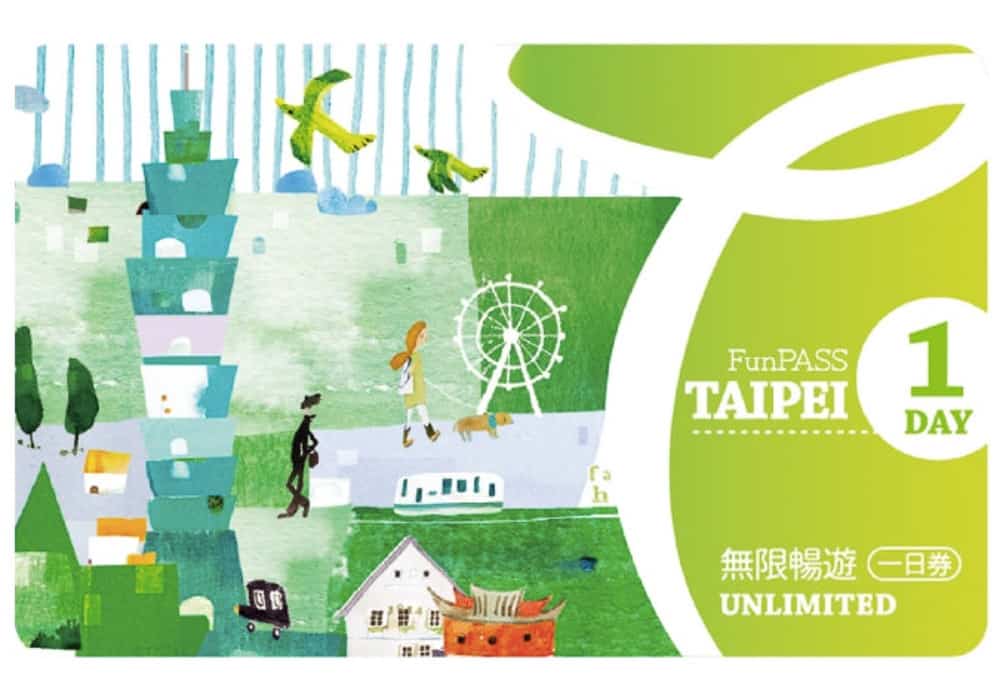
The Taipei fun pass
It also includes unlimited rides on the MRT, buses, and 5 tourist shuttle buses for day trips out of the city. The pass is only worth it if you visit enough of the attractions that are included. If you get this pass, you don’t need to get an EasyCard.
There are a few other Fun Passes, such as the Taipei Transport Pass and Taipei Explore Pass, but they are less popular.
If you visit Sun Moon Lake on your trip (see #6 below), there are a number of Sun Moon Lake passes as well.
Like the Taipei Fun Pass, they can save you money, so long as you do most or all of the things that they include. There are half a dozen different ones available.
4. Where to Stay in Taipei
It’s never easy to decide where to stay in such a big city like Taipei. And unlike some other big Asian cities, Taipei doesn’t really have a tourist or backpacker’s area.
Hotels are spread around the city, but so long as you choose one near any MRT station, you’ll have no issue getting around.
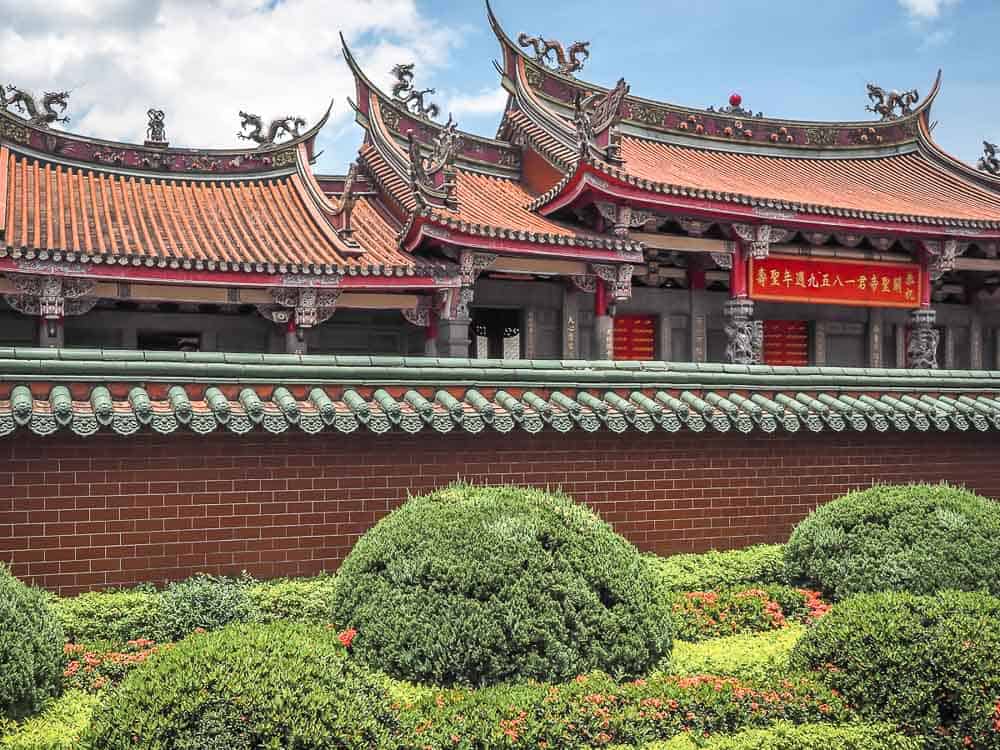
Outside one of the many temples in Taipei
Staying around Taipei Main Station is the most convenient for getting in out and of the city. Xinyi District, around Taipei 101, is the ritziest neighbourhood, with upscale shopping and lots of night clubs.
Ximending is the coolest neighbourhood, while Da’an is more international because several universities are there.
Finally, Zhongxiao East Road is always buzzing with activity, restaurants, and shopping.
You can learn more about these neighbourhoods and the best hotels to stay in each of them in this detailed guide to where to stay in Taipei.
5. What to Do in Taipei (and how long to stay)
Just like choosing where to stay, planning an itinerary for Taipei, one of the great capital cities of Asia, is no simple task. First, I would recommend budgeting two full days if you can, just for Taipei.
If you want to make day trips (which I would strongly recommend, because there are so many good ones), add at least one, if not two or more days.
The top tourist attractions in Taipei include Taipei 101 (with its 89st floor observation deck), Elephant Mountain (for postcard views of Taipei and Taipei 101), Chiang Kai-Shek Memorial Hall, Longshan Temple, National Palace Museum, and Maokong Gondola.
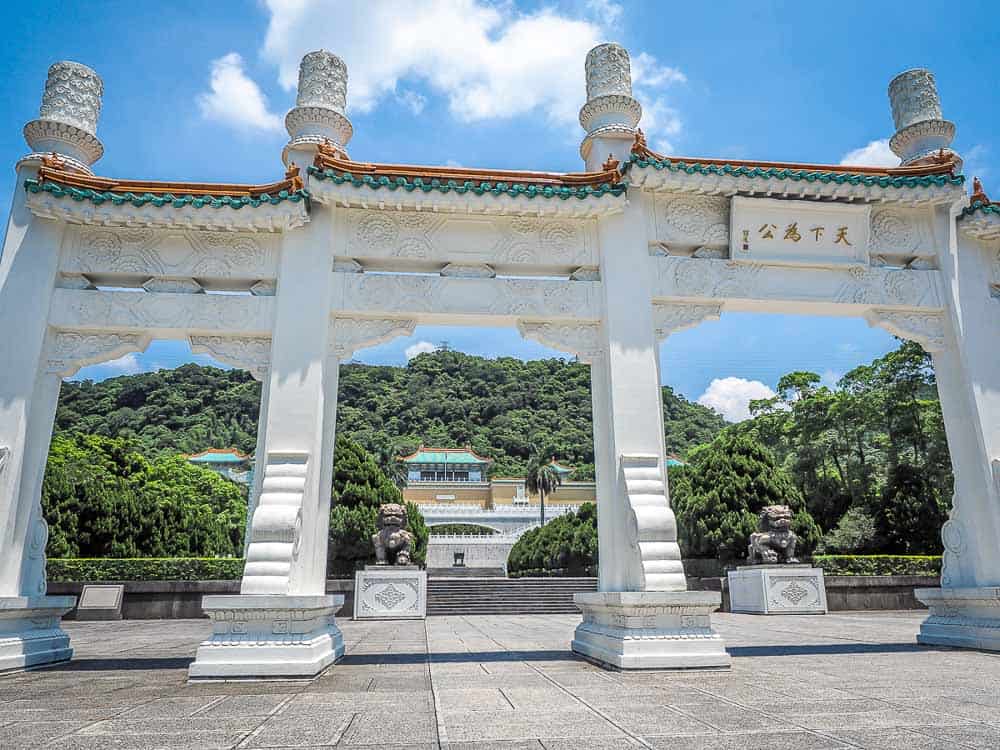
National Palace Museum in Taipei
Taipei’s Night Markets are also a big deal, and you simply can’t miss eating in one.
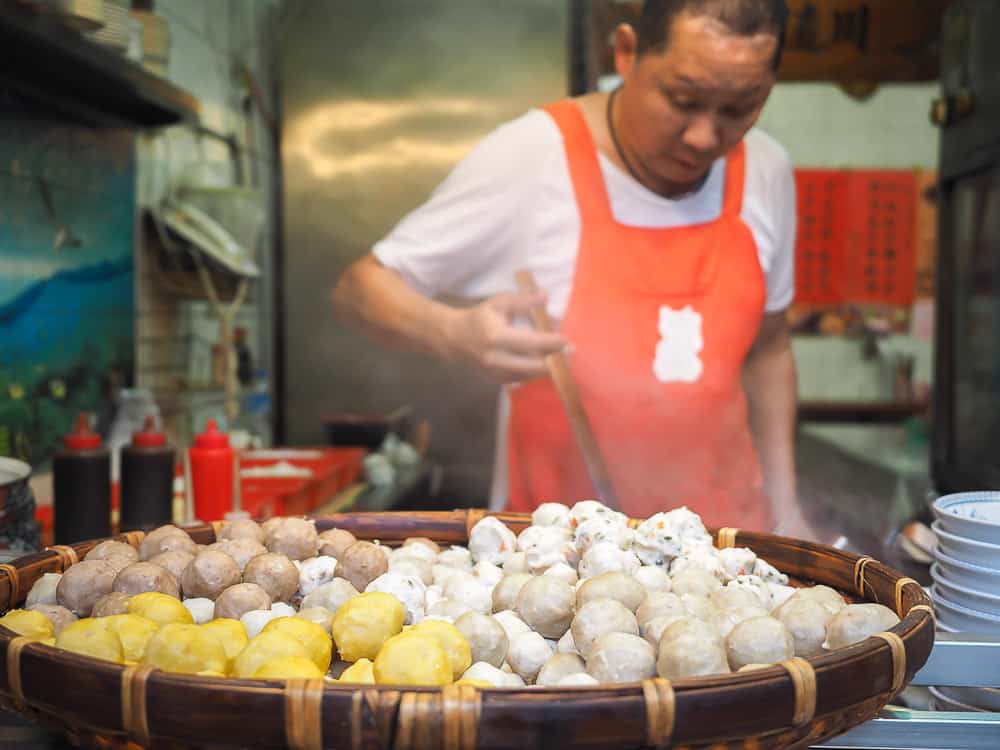
Night market in Taipei
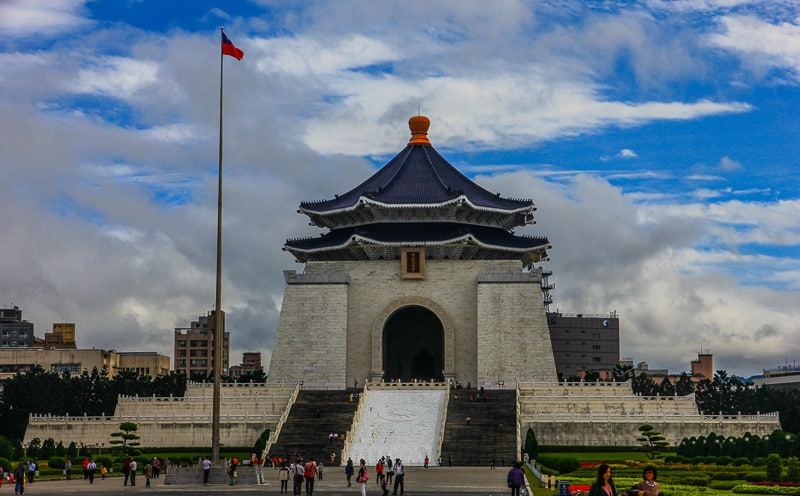
Chiang Kai-Shek Memorial Hall a must-visit in Taipei
The big five are Shilin, Raohe, Ningxia, Tonghua, and Huaxi. They’re all great, but if you want a super local one, try Nanjichang.
Some other attractions to consider visiting include Huashan 1914 Creative Arts Park, Addiction Aquatic (an upscale seafood market), Sun Yat-Sen Memorial Hall, Ximending pedestrian street, Jianguo Jade & Flower Market, Treasure Hill Artist’s Village, and any of the city’s many other amazing temples.
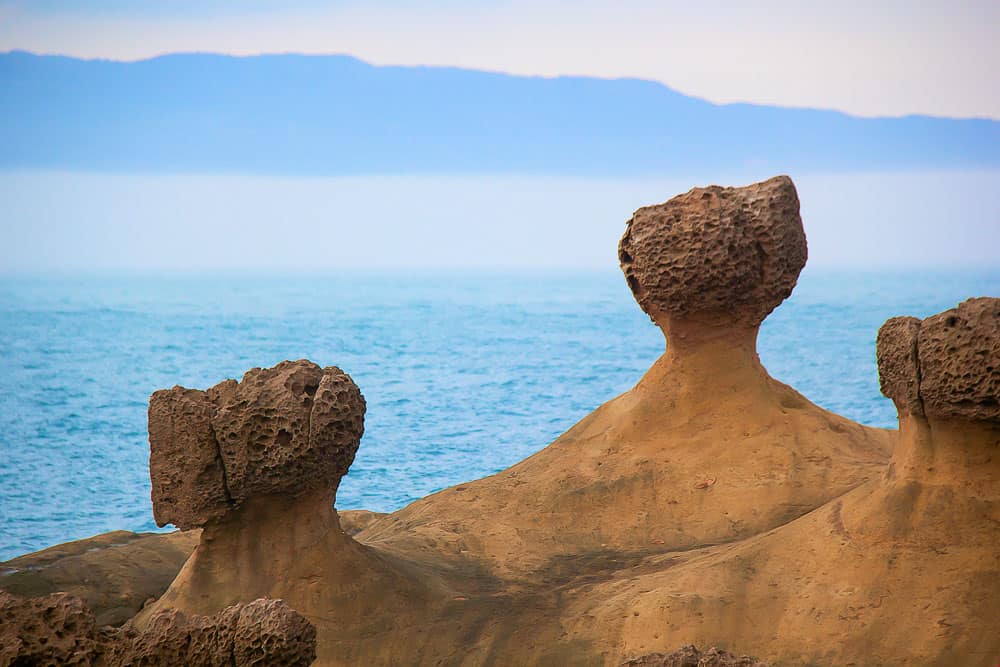
Yehliu geopark a popular day trip from Taipei
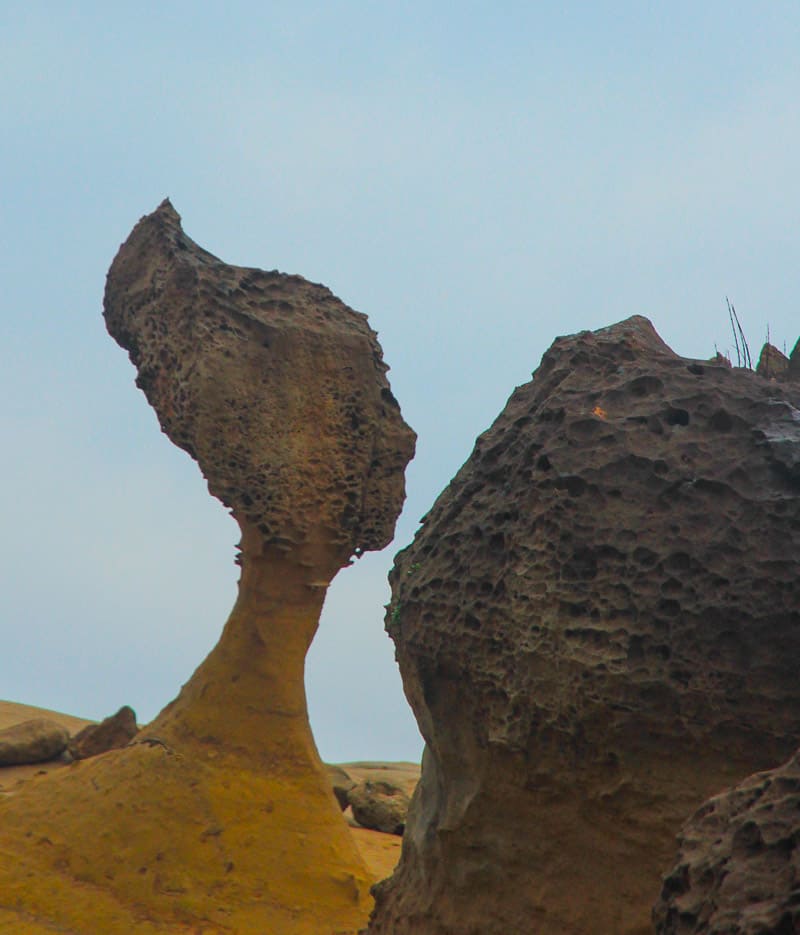
The Queen’s head at Yehliu geopark
The best day trips from Taipei include Jiufen (an old mining town), Shifen Waterfall, Houtong Cat Village, Yehliu Geopark, beaches on the north and northeast coast, Wulai Hot Spring, and Jiaoxi Hot Spring.
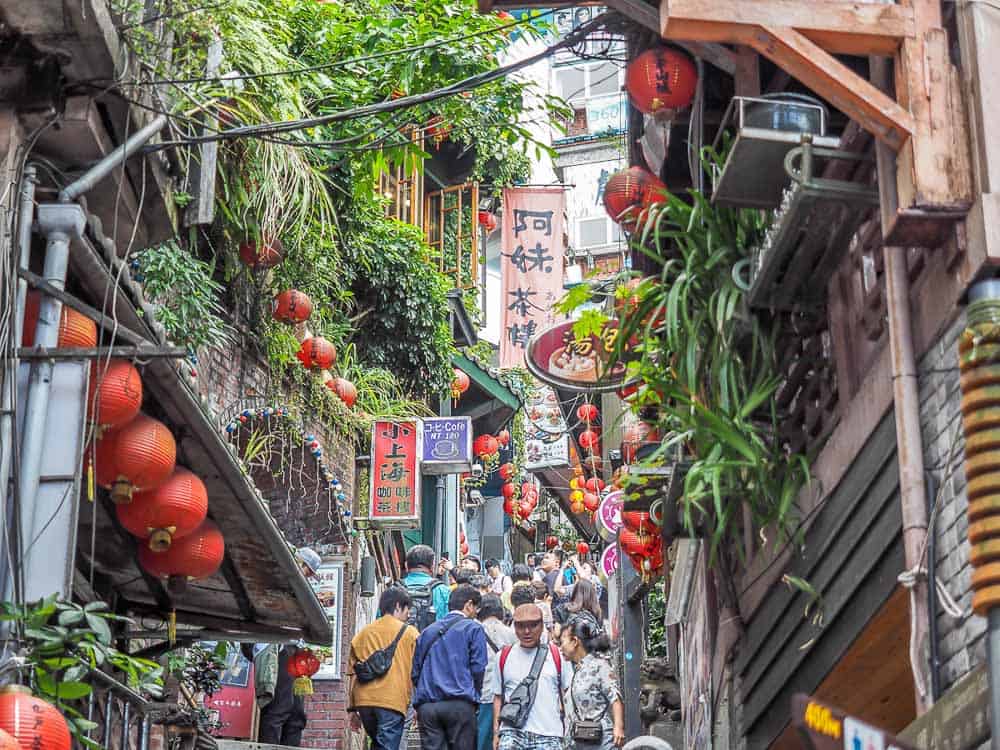
Jiufen a charming town and an easy day trip from Taipei
6. Planning your Taiwan Itinerary (and how long you need)
While many people only visit Taiwan for 5 days or a week, that’s really not enough time.
With only 5 days, you might only stay in Taipei and make a few days trips, while with a week, you could squeeze in a trip to Taroko Gorge on the East Coast or Taichung and Sun Moon Lake in Central Taiwan.
If you want to do a full circle around Taiwan, the minimum amount of time I would recommend is two weeks.
After visiting Taipei for 2-3 days, you could travel in a clockwise direction and visit Taroko Gorge, spend a few days in rural Taitung, visit Kaohsiung.
Next, you would travel to historic Tainan, then up into the mountains to Alishan National Scenic Area, connect to Sun Moon Lake, and make a brief stop in Taichung to see Rainbow Village before returning to Taipei.
With two weeks, the above is barely possible, so you might have to cut out a stop or two to make it work. Add a few more days, and it’s perfectly feasible.
With even more time, you could get off the beaten track, adding stops like Lukang, more time in laid-back Taitung, a side trip from Kaohsiung to Kenting’s beaches on the southern tip of Taiwan, or one of the gorgeous offshore islands, such as Green Island, Orchid Island, or Penghu.
For more details on how to plan this, here are recommended Taiwan itineraries for 1, 2, and 3 weeks.
7. Customs in Taiwan
For visitors to Taiwan, being aware of a few local customs can help you to show respect to locals and have a more enjoyable visit.
Generally speaking, Taiwanese people are very friendly and polite, and most of them can speak a little English.
Here are some tips for fitting in rather than standing out in a bad way:
- Always give up your seat to the elderly (unless you’ve reserved that seat). Dark blue seats on the MRT are reserved for the needy.
- On escalators, stand on the right, walk on the left (mainly in Taipei).
- No food or gum is allowed on the MRT.
- Never raise your voice.
- Realize that in Taiwan, locals are very unlikely to try to rip you off. It rarely happens. So if your taxi driver says there’s an airport fee, or he knows a better way, he’s probably telling the truth.
- In most restaurants, a bill will be left at your table. When you’re done, take it to the front and pay. Sometimes, you may have to pay first. Don’t pay the waiter/waitress directly.
- Don’t leave chopsticks upright in a bowl of rice.
- Don’t walk around with no shirt or shoes, unless you are on a beach. Sandals, tank tops, and shorts are OK, though. For women, short skirts and very short shorts are commonly worn by locals, so they are fine as well.
- Don’t leave tips (see #9)
8. Money & Costs
Taiwan is not the cheapest place to visit in Asia, nor is the most expensive.
You could probably say it’s a little pricier than Thailand, similar to South Korea, and not quite as expensive as Japan.
Budgets will vary widely according to how you travel, but here are some typical costs of items in Taipei:
Small can of beer from 7-Eleven: TWD 35 ($1.20)
Bubble tea: TWD 50-100 ($1.75-3.50)
A simple bowl of street noodles: TWD 50-200 ($1.75-7)
One MRT ride: TWD 25-60 ($0.90-2.10)
10-minute taxi ride: TWD 200 ($7)
All-you-can-eat hot pot + beer: TWD 600-800 ($21-28)
Taipei 101 Observation Deck: TWD 600 ($21)
Hostel bed: TWD 250-700 ($9-25)
Mid-range hotel for 2: 2500-5000 ($87-175)
The Taiwanese currency is called the New Taiwan Dollar (NTD) or Taiwan Dollar (TWD). Many English speakers call is “NT” or simply “dollars”. In Mandarin, it may be called kuai or yuan.
There are coins of 1, 5, 10, and 50, and bills of 100, 500, and 1000 (200 and 2000 are rare, but you might come across them).
Taiwan is very much a cash economy. You’ll need cash for markets, street food, smaller restaurants, and so on.
Even for buying some bigger things, like a camera, you’ll have to pay a surcharge to use a credit card, as they prefer cash. Credit cards can be used in higher-end restaurants and shops.
There are ATMs everywhere, and it’s normal to carry around a lot of cash. Taiwan is an incredibly safe country, and you can walk anywhere alone, even at night.
9. Tipping in Taiwan
In short, you don’t need to tip in Taiwan. In fact, some locals might even take offense to tipping.
This is especially true for taxi drivers and small local restaurants.
However, in mid-range and upper-end restaurants, it is becoming more common for the restaurant to add a 10-15% service charge to the bill. You don’t need to tip anything above that.
The only time you might want to consider tipping in Taiwan is if you take a tour or hire a driver or guide for the day.
If you really think they have done a great job, you can give them a tip of around 10%.
The same holds for other personal services like masseuses, or bellhops at a high-end hotel. If in doubt, remember that locals virtually never tip for anything.
10. Guided Tours & Other Resources
Generally speaking, Taiwan is a fairly easy country to get around, and there’s a lot of English information to be found online.
Government tourism websites tend to be poor, but English-speaking bloggers usually provide more than enough information.
Klook is the best online service for finding discounts and deals in Taiwan.
They have everything from restaurant vouchers and skip-the-line tickets to HSR reservations and travel passes.
For single or multi-day tours, Klook and GetYourGuide are both good.
If you want to do some serious hiking in Taiwan, Taiwan Adventures is the best local operator, while Island Life Tours excels at Taroko Gorge day tours and the East Coast.
For fully customized high-end tours, try Life of Taiwan.
Now that you are armed with this Taiwan travel tips, you should be ready to execute a perfectly planned trip to Taiwan. Enjoy, and let us know how it goes!
Author Bio:

Canadian Nick Kembel has lived in Taiwan for over 10 years and is the author of Taiwan in the Eyes of a Foreigner.
He blogs at nickkembel.com and offers free Taiwan travel advice in his Taiwan Travel Planning group on Facebook.
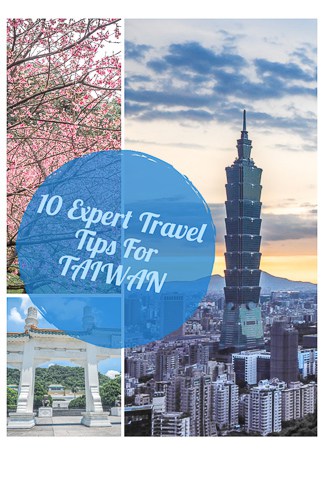
Everything you need to know before travelling to Taipei and Taiwan
